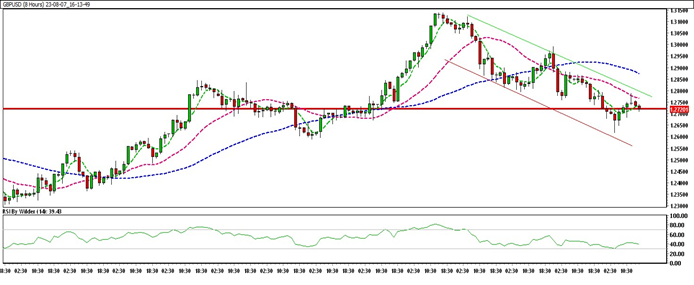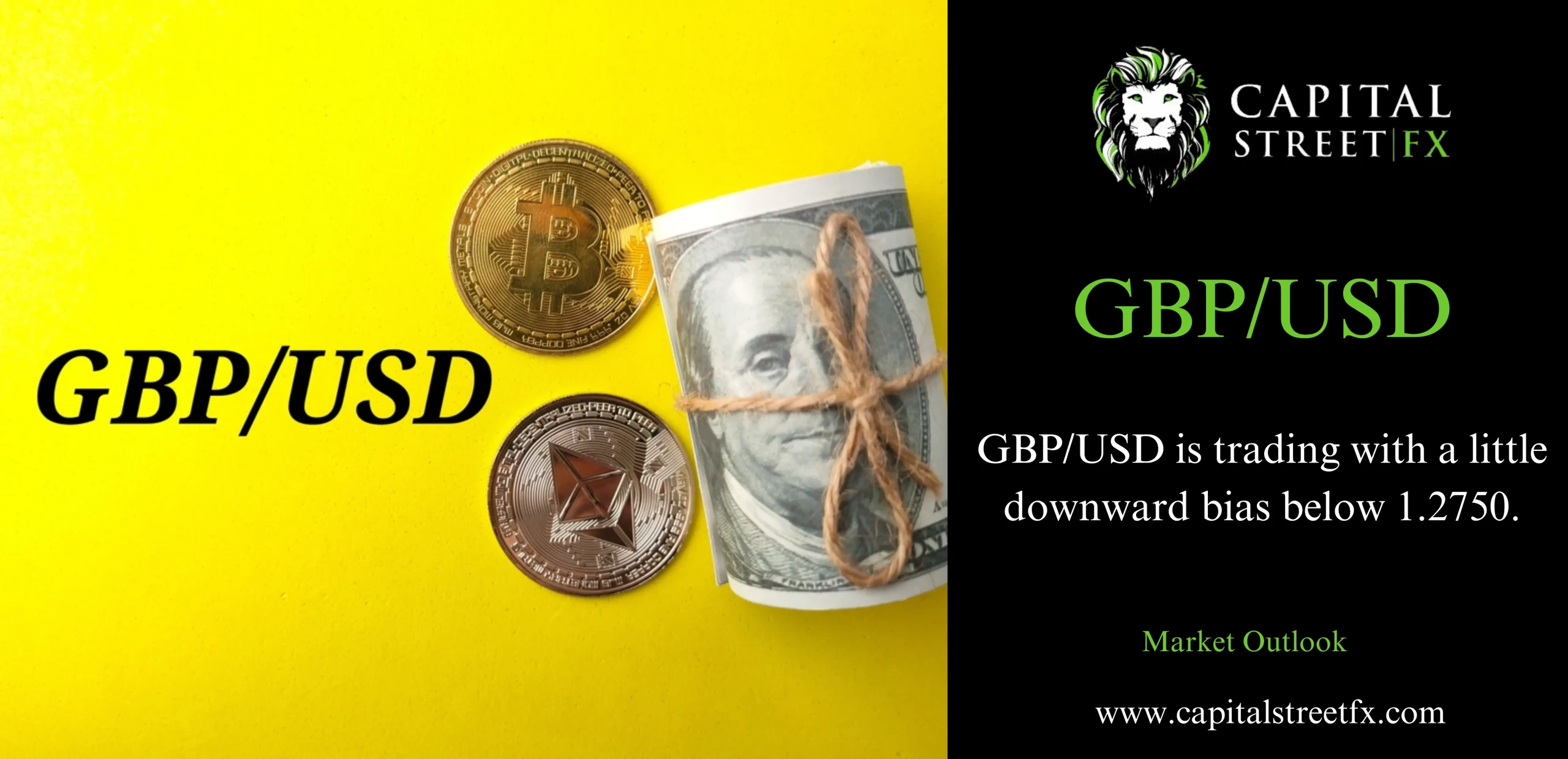Exploring GBP/USD Trends: A Dive into Fundamentals and Technical Analysis.
Introduction
In the dynamic world of forex trading, the GBP/USD currency pair has been attracting attention with its recent movements. The interplay of fundamental factors and technical indicators has created an intriguing landscape for traders and analysts alike. This article delves into the fundamental overview and technical analysis of GBP/USD, shedding light on its recent trajectory, influencing factors, and potential trading strategies.

Fundamental Overview: Navigating the Factors
US Dollar’s Comeback Puts Pressure on GBP/USD
The GBP/USD has been experiencing a slight downward bias, slipping below the critical 1.2750 mark. This downward movement can be attributed to the US Dollar’s resurgence, fueled by bets on additional rate hikes by the Federal Reserve and pre-US CPI concerns. The demand for the US Dollar has been bolstered, impacting the exchange rate dynamics.
Bank of England’s Role in the Dovish Tone
The Bank of England (BoE) also plays a pivotal role in shaping the current sentiment. Despite a 25 basis points rate hike in its August policy meeting, the BoE’s less aggressive forward guidance has contributed to the dovish undertone surrounding GBP/USD. The announcement of lower inflation expectations by the BoE has added further pressure on the British Pound.
US July Jobs Report and Risk Sentiment
The GBP/USD’s recent movements have been influenced by external factors, including the highly anticipated US July jobs report. Investor caution ahead of this report led to the pair remaining at the 1.2700 range. Additionally, improving risk sentiment and mixed macroeconomic data from the United States added complexity to the US Dollar’s strength, impacting GBP/USD’s trajectory.
GBP/USD Weekly Prospects
The uncertainty surrounding the Federal Reserve’s future interest rate decisions is a key aspect affecting the weekly outlook of GBP/USD. If the US labor market remains tight, hawkish Fed sentiments could dominate, leading to potential repercussions for the pair. Given the Bank of England’s cautious approach to further policy tightening, the GBP/USD might continue its downward trajectory under specific scenarios.
Technical Analysis: Decoding GBP/USD Trends

GBP/USD’s Current Position
Analyzing the technical side of GBP/USD reveals an intriguing picture. The currency pair is currently trading within a downward channel, indicating a bearish trend. Furthermore, GBP/USD is positioned below all Simple Moving Averages (SMA), signifying the prevailing downward momentum.
Key Indicators
The Relative Strength Index (RSI) stands in the selling zone, underlining the bearish sentiment. Meanwhile, the Stochastic oscillator suggests a more neutral trend, hinting at potential shifts in the near future.
Support and Resistance Levels
Key support and resistance levels play a crucial role in understanding potential turning points for GBP/USD. The immediate resistance level is identified at 1.2758, while the immediate support level is marked at 1.2709. These levels could guide traders in making informed decisions.
Navigating GBP/USD Trading: Strategies and Insights
Following the Pattern: Lower Lows and Support Zones
GBP/USD’s recent pattern of lower lows after a rapid surge has piqued trader interest. The currency pair is currently trading within a support zone, and breaching this zone could open the door for further downside potential. Traders should closely monitor this support level for potential trading opportunities.
Trade Suggestion: A Closer Look
Based on the current analysis, a trade suggestion emerges. Considering the prevailing sentiment, a sell signal for GBP/USD is indicated. A potential entry point lies at 1.2680, with a take profit target at 1.2619. To manage risk, a stop loss at 1.2735 is recommended.
Conclusion: Navigating the Complex Landscape
In conclusion, the GBP/USD landscape is characterized by a delicate interplay of fundamental and technical factors. The US Dollar’s resurgence, the Bank of England’s cautious approach, and external influences like the US jobs report all contribute to the pair’s dynamics. Technical indicators guide traders, with potential entry and exit points defined by support and resistance levels. Navigating this intricate landscape requires a keen understanding of both the macroeconomic landscape and technical trends. As traders continue to engage with the GBP/USD pair, staying informed and adaptable remains essential for success.
FAQs – Addressing Common Queries
Q: What is influencing the recent downward bias in GBP/USD?
A: The downward bias can be attributed to the US Dollar’s comeback, driven by Fed rate hike expectations and pre-US CPI concerns.
Q: How has the Bank of England contributed to the dovish tone?
A: The BoE’s less aggressive forward guidance and lower inflation expectations have added to the bearish sentiment.
Q: What external factors are impacting GBP/USD?
A: The highly anticipated US July jobs report and mixed US macroeconomic data are influencing the currency pair’s movements.
Q: What technical indicators are signaling for GBP/USD?
A: The RSI is in the selling zone, while the Stochastic oscillator suggests a more neutral trend.
Q: What are the immediate support and resistance levels for GBP/USD?
A: The immediate resistance level is at 1.2758, and the immediate support level is at 1.2709.

